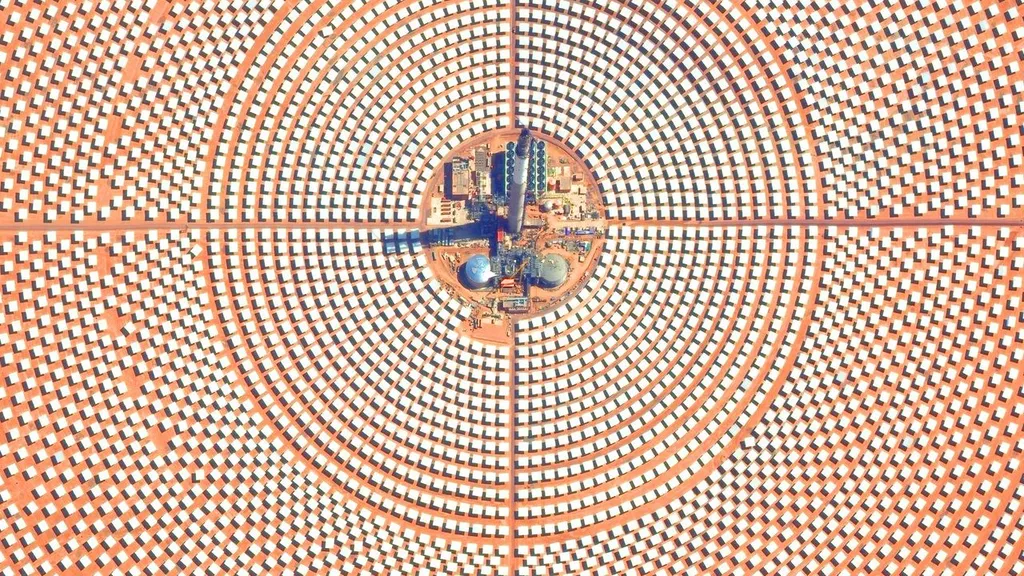In the sun-scorched landscapes where solar farms thrive, a persistent foe lurks: dust. This seemingly innocuous nuisance cloaks photovoltaic (PV) panels, choking their efficiency and inflating operational costs. But a novel solution, born in the laboratories of Morocco’s Green Energy Park Research Platform (GEP, IRESEN/UM6P), is poised to revolutionize the way we maintain solar infrastructure. Led by Hicham Oufettoul, a team of innovators has devised a self-cleaning system that could redefine the economics of solar power, particularly in arid regions where dust accumulation is most acute.
The problem is stark. Dust accumulation on PV panels can lead to significant power losses, sometimes exceeding 40% in severe cases. Traditional cleaning methods, often involving water and manual labor, are not only resource-intensive but also risk damaging the delicate surfaces of solar panels. “In dry areas with high dust concentrations and wind speeds, conventional cleaning methods fall short,” Oufettoul explains. “Our solution addresses these challenges head-on, offering a sustainable and efficient alternative.”
The prototype developed by Oufettoul and his team employs a transparent rolling film that glides across the surface of PV panels. This film physically removes dust particles while ensuring optimal sunlight penetration. The system is not just about cleaning; it’s about intelligence. Equipped with an autonomous cleanliness assessment feature, the prototype eliminates unnecessary cleaning cycles, conserving energy and extending the lifespan of the panels. “This is more than just a cleaning mechanism; it’s a smart system that learns and adapts,” Oufettoul adds.
One of the most compelling aspects of this innovation is its waterless operation, a boon for water-scarce regions where solar farms are increasingly being established. By eschewing water, the system not only conserves a precious resource but also reduces the environmental footprint of solar energy production. The prototype also includes real-time data collection, visualization, and actuator control, providing operators with unprecedented insights into the performance of their solar arrays.
The commercial implications of this research are profound. Solar energy is a rapidly growing sector, with installations spreading across the globe. However, the efficiency and reliability of these installations are often hampered by maintenance issues. A self-cleaning system that requires minimal intervention and no water could significantly lower operational costs, making solar energy more competitive with other forms of power generation. “This technology has the potential to transform the solar energy landscape,” Oufettoul states. “It’s about making solar power more reliable, more efficient, and more sustainable.”
The research, published in the journal Unconventional Resources, represents a significant step forward in the quest for more efficient and sustainable solar energy solutions. As the world grapples with the challenges of climate change and the need for clean energy, innovations like this one offer a glimmer of hope. They remind us that the solutions to our most pressing problems often lie in the intersection of creativity, science, and a deep understanding of the environment.
Looking ahead, the implications of this research are vast. The self-cleaning system could be integrated into existing solar farms, enhancing their efficiency and reducing maintenance costs. It could also pave the way for new installations in regions previously deemed too challenging due to dust and water scarcity. As the technology evolves, it may even find applications beyond solar energy, in other areas where dust and dirt pose operational challenges.
In the end, the work of Oufettoul and his team is a testament to the power of innovation. It’s a reminder that the future of energy is not just about generating power; it’s about doing so in a way that is sustainable, efficient, and adaptable to the unique challenges of our planet. As the world continues to seek solutions to the energy crisis, this research offers a compelling vision of what is possible.

